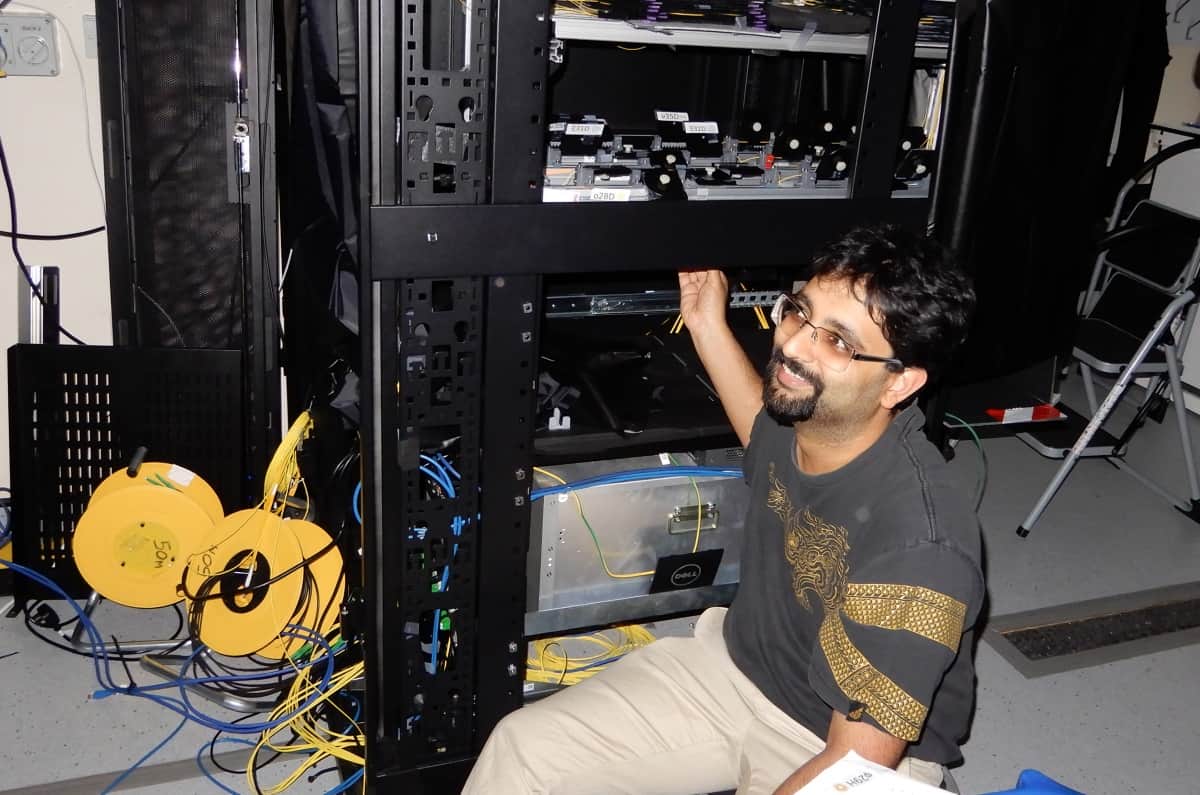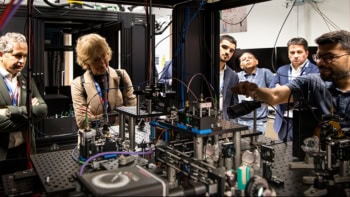
The concept of quantum communication, with security guaranteed by the laws of physics, took the world by storm when first unveiled in 1984. The traditional protocol, however, allows only two people to communicate securely. Attempts to extend this to “quantum networking” have usually proved either insecure or impracticably complex. Now, however, researchers in the UK and Austria have demonstrated secure information exchange between eight users spaced all around a city.
The canonical quantum communication protocol relies on two parties generating a secure key by exchanging polarized photons. The security of the link is guaranteed by the fact a third party cannot make a measurement of their state without disturbing them and being detected. Though remarkable, this approach is fundamentally limited to pairwise communication: it does not provide a blueprint for the multi-dimensional quantum network, or “quantum internet” that some researchers have dreamed of, in which multiple users connected together can all communicate simultaneously and securely with any other member of the network.
One obvious way to extend the scheme beyond two people is for the second person to simply act as a link in the chain, repeating the procedure and communicating securely with a third person, who in turn passes the message on until the message reaches its ultimate destination. Quantum networking schemes based on such “trusted nodes” have been developed. The security of such schemes is no longer absolute, however, because a trusted node may not be totally secure. Schemes that avoid trusted nodes have generally proved unfeasibly complex and hardware-intensive or have suffered other problems, such as restricting which users can communicate at any one time.
In 2018, researchers at the Institute for Quantum Optics and Quantum Information in Vienna led by Rupert Ursin demonstrated a scheme in which four users received pairs of entangled photons from a single, laser-pumped crystal source. “I generate these two-by-two, but I generate several such two-by-two pairs in a tiny amount of time,” explains project leader Siddarth Koduru Joshi.

This constant stream of entangled photon pairs from a single, central source allowed each of the four parties to become pairwise entangled with each of the other three parties. “If I’m talking to you, I look at stream one, if I’m talking to somebody else, I look at stream two, and so on,” says Joshi, now at the University of Bristol. The researchers believed that this scheme provided a simpler, more scalable architecture for secure, trusted-node free information exchange between multiple parties.
In the new work, researchers at the University of Bristol, in collaboration with the Austrian scientists, have confirmed that the technique works, demonstrating simultaneous and secure exchange of information between eight users spaced up to 12.6 km away from the central source around the city of Bristol. “This time, we actually demonstrated quantum communication, and we did this through deployed fibres across the city to show compatibility with existing infrastructure,” says Joshi.

The quantum space race
Moreover, the researchers added additional multiplexing to simplify the hardware required by each user and make the protocol even more scalable: whereas their original protocol would have required 56 wavelength channels to fully interconnect eight users, their improved version required only 16. The researchers believe their network is the largest trusted-node free quantum network to date.
Quantum and computer engineer Wolfgang Tittel of QuTech at Delft University of Technology in the Netherlands describes the paper as “nice and important work” and is especially impressed by the absence of trusted nodes. An important next step, he says, is the scheme’s integration with quantum repeater technology, which to mitigates photon loss and decoherence and allows entanglement distribution over long distances. This, he says, could “extend the network beyond metropolitan size”.
The research is published in Science Advances.



